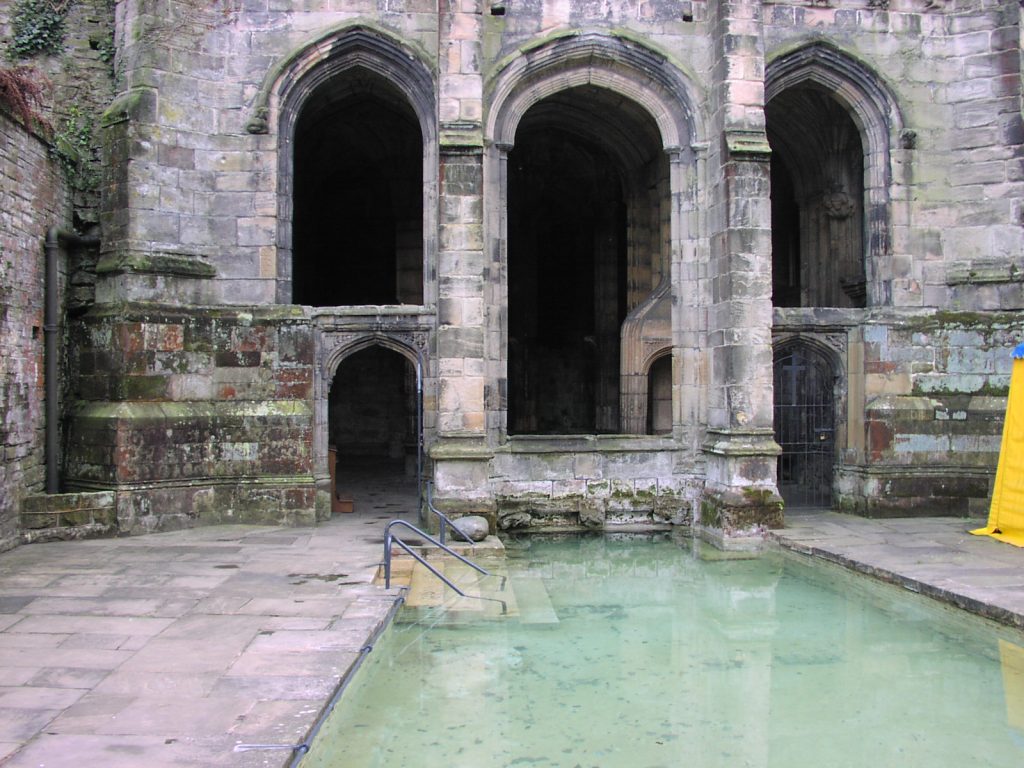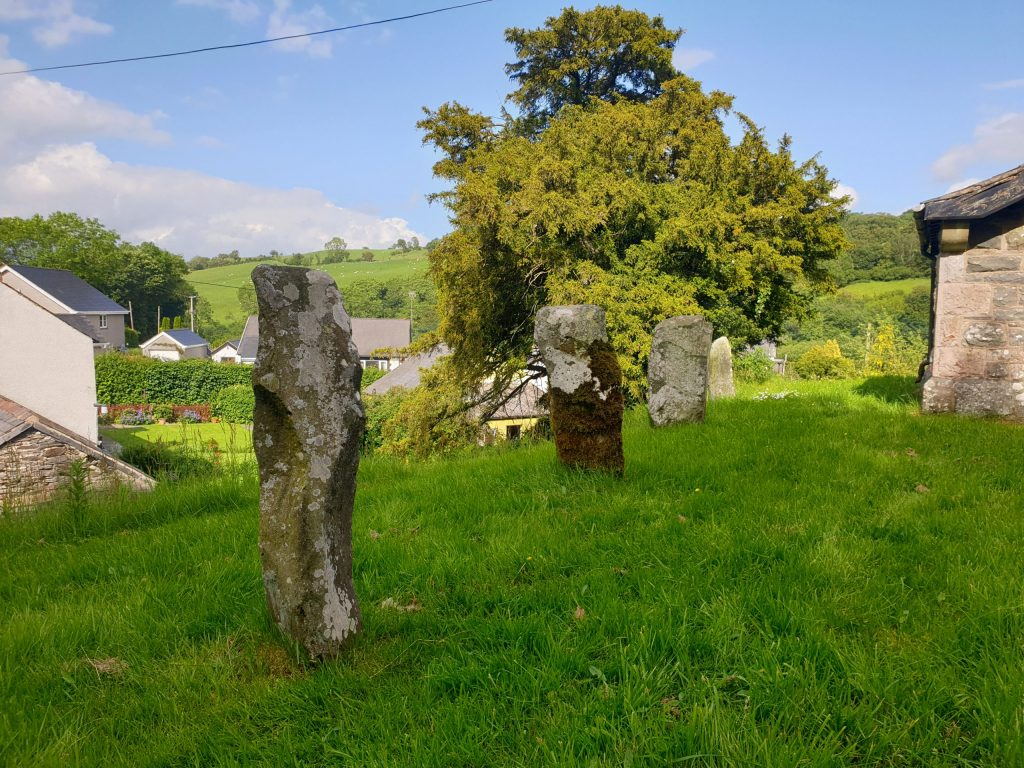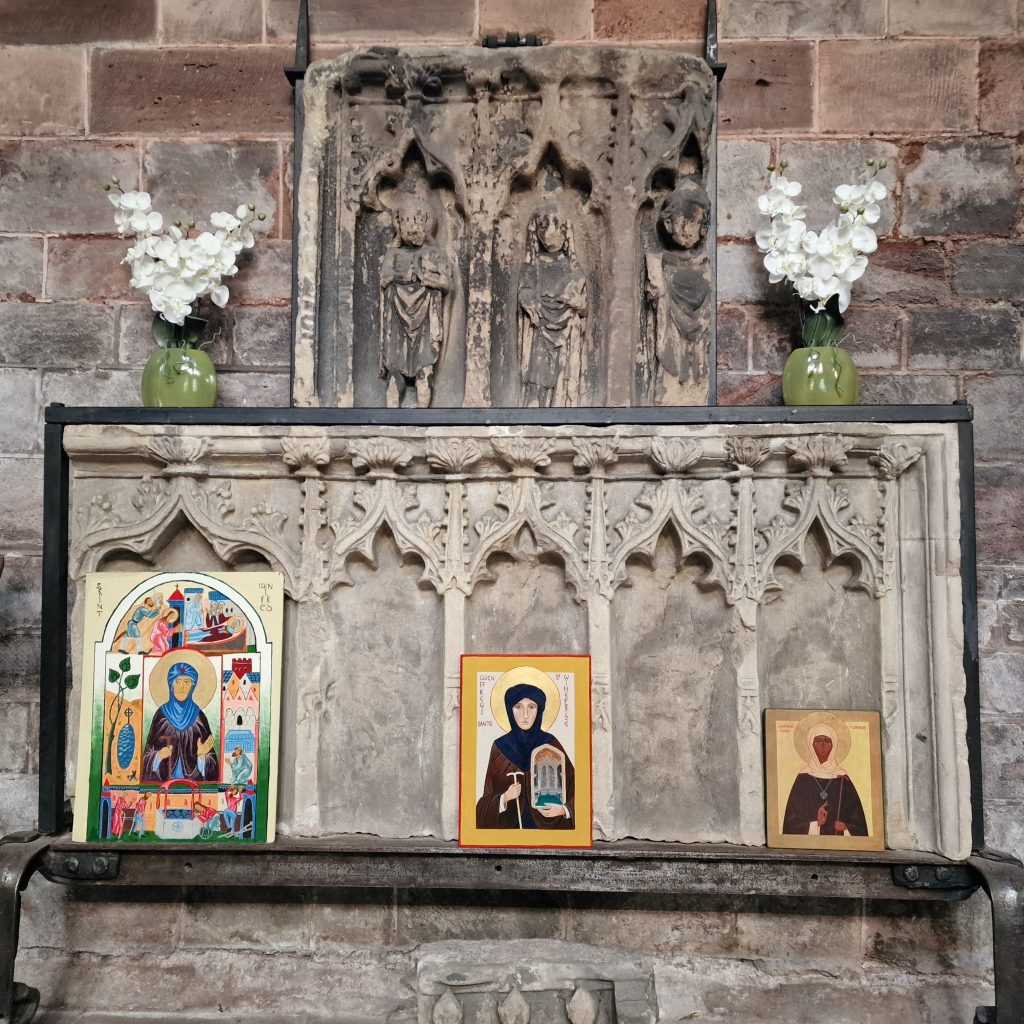
The weather is improving and Spring is passing into Summer. Now we can begin to plan which of the hundreds of holy places to visit, associated with the several thousands of saints of these British Isles. In almost every part of the British Isles we are not very far from some special place with memories and connections with the saints.
St Winefride is one example of just such a British saint associated with several places. She lived in the 7th century and was the daughter of a Welsh nobleman, Tyfid and his wife Gwenlo. She was the niece of St Beuno, another famous saint of these period and had dedicated herself to a life of prayer and chastity even from her youth. She lived in seclusion, even as a young woman, at Holywell in North Wales, near her uncle, St Beuno.
He was preparing to celebrate the Liturgy for the Feast of St Alban on June 22nd in his small chapel when St Winefride was surprised by a young prince, Caradog, who found her when he was out hunting and was inflamed with lust towards her. She resisted his advances and fled through the woods to the place where her uncle had established his own cell, and it was as she placed her hand on the door of the chapel that Caradog caught up with her, and with a blow of his sword, beheaded her.
St Beuno took up her head and miraculously brought her back to life leaving only a silver scar around her neck. As for Caradog, St Beuno cursed him and he dropped dead himself. The place where this took place is at Holywell where the shrine of St Winefride remains a place of pilgrimage. A spring burst forth at the place where her head fell, and those who have bathed there in the centuries since have found healing. Even during the years when the Protestant authorities tried to stop all veneration of the saints and all pilgrimage, still people have come to this holy place.
There is a slab of rock there in the gardens, and before St Beuno left the place to return to his monastery at Caernarvon he said,
…whosoever on that spot should thrice ask for a benefit from God in the name of St. Winefride would obtain the grace he asked if it was for the good of his soul.

After 8 years at Holywell, St Winefride followed the inspiration of God and set off further inland to Gwytherin where she became Abbess of a small convent which existed there with a monastery for men. It is still possible for us to visit the place where her convent was situated. There is a later Medieval church on the site, and several ancient stones. The church is still dedicated to St Winefride, and she died after being Abbess for 15 years, and was buried here in about AD 660.
About her death we learn,
When the time came for her departure from this world, Winefride bade the virgins to keep their vows of chastity and guard their faith. Receiving the last sacrament from the Abbot Eleri, she died at the beginning of November and was buried in the churchyard at Gwytherin next to Tenoi and with the confessors Senanus and Chebius and other holy men and women. After her death many came to Gwytherin to be cured of their infirmities.
In AD 1130, an abbey had been constructed in Shrewsbury and when one of the monks was healed through the intercession of St Winefride it was arranged for her remains to be brought from the little church of Gwytherin to the great abbey of Shrewsbury. This became a place of pilgrimage for centuries until the Protestant Revolution swept everything away. A few fragments of the shrine of St Winefride are still to be found in the abbey church at Shrewsbury though all rest of the monastery was totally destroyed. The remains of St Winefride were thrown away as if they were rubbish and all that was preserved was one of her finger bones which had been sent to Rome in the centuries before.

Part of this fragment is venerated in the Shrine Church at Holywell, while another part is venerated in the Catholic Church of St Winefride in Shrewsbury.
Here are three places within our Diocese of the Midlands in the Coptic Orthodox Church which are directly associated with this holy woman, this saint who is worthy of our remembrance and veneration. Each of these places is within an easy drive of many of our Coptic Orthodox congregations. Nor is she the only saint whose holy places surround us.
As the Spring changes to Summer, where will you visit? Which saint will you honour in a little pilgrimage of your own? There are hundreds and thousands who deserve our praise and deserve to be remembered for the glory of God and for our salvation.
